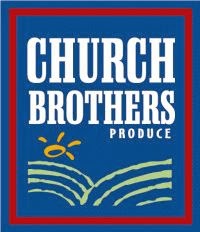LET’S TALK ABOUT CALIFORNIA’S WATER PLAN
|
Westlands Supports Dialogue
on Draft California Water Action Plan |
|
TODAY, Westlands Water District announced that it supports the goals of the draft California Water Action Plan, a proposal to secure reliable water supplies, restore important species and habitat, and construct a more resilient water system to meet changing conditions.
The Action Plan acknowledges that California cannot meet the water supply needs of the residents of the state or reach its environmental goals unless critical actions are taken to increase water supply and improve the state’s water infrastructure.
“This Action Plan comes at a critical time for the Westlands Water District and the people in the San Joaquin Valley who are facing the prospect of a record low water allocation, an historic low point in water supply reliability, and yet another year of severe economic hardship,” said Westlands General Manager Tom Birmingham.
The Plan recognizes the need for near-term solutions to respond to the extreme water supply conditions that currently exist that are adversely impacting state agriculture production.
The state and federal government must address the short-term water supply needs of farmers immediately. Westlands will continue to work closely with the Administration and federal officials to develop solutions that will protect the farms and families in the areas most impacted by chronic water supply shortages and to address the inability of the current water infrastructure to deliver available water.
Failure to address the recurring near-term water shortages will have a devastating impact on California’s agricultural economy and jobs in the Central Valley, and ultimately the economy of the entire state. Everything from farm workers harvesting crops for food supplies to agricultural exports at our ports will be impacted negatively by another crippling water supply allocation.
Westlands is also committed to the longer-term solution provided by the Bay Delta Conservation Plan (BDCP) and supports the implementation of the BDCP as the means of achieving the long-term co-equal goals of providing a more reliable water supply for California and to protect, restore, and enhance the Delta ecosystem. Through new conveyance, the BDCP addresses water supply and delivery problems that have been discussed and debated for more than 30 years.
State and federal agencies have developed a comprehensive plan that has been analyzed by numerous experts from the scientific, economic, and environmental perspective, modified substantially to address issues raised by interested groups and presented to the public for review in more venues than any other state project.
As acknowledged by the draft California Water Action Plan, it is time for the project to begin. We must take action now.
The draft California Water Action Plan is the beginning of an important dialogue on a comprehensive solution, but dialogue needs to result in substantial changes. We are optimistic that the Plan will create the momentum for major water supply and ecosystem improvements throughout the state.
|
Dairies are Meeting the WDR Requirement
Novavine Open House Friday Nov. 1
California Citrus Mutual Annual Meeting, Nov. 7 in Visalia
Bakersfield Screening is Nov. 8
Western United Dairymen Convention March 5-7
The WUD staff wants the site to be as complete and easy to navigate as possible. If you see something on the site that can be improved, please contact Heidi Savage at hsavage@westernuniteddairymen.com
UC DAVIS TO LEAD NEW USAID PROGRAM
Church Brothers Produce Names New Food Safety Head
 Salinas-based grower/shipper of fresh vegetables Church Brothers/True Leaf Farms has named Drew McDonald Vice President of Quality, Food Safety & Regulatory Affairs. Drew will be working with all of the growing and processing operations under the Church Brothers family of companies.
Salinas-based grower/shipper of fresh vegetables Church Brothers/True Leaf Farms has named Drew McDonald Vice President of Quality, Food Safety & Regulatory Affairs. Drew will be working with all of the growing and processing operations under the Church Brothers family of companies.
 He is experienced with grower, processors, and suppliers of fresh food and produce items sourced from large commercial operations down to small, local farms throughout North America and world-wide.
He is experienced with grower, processors, and suppliers of fresh food and produce items sourced from large commercial operations down to small, local farms throughout North America and world-wide.









